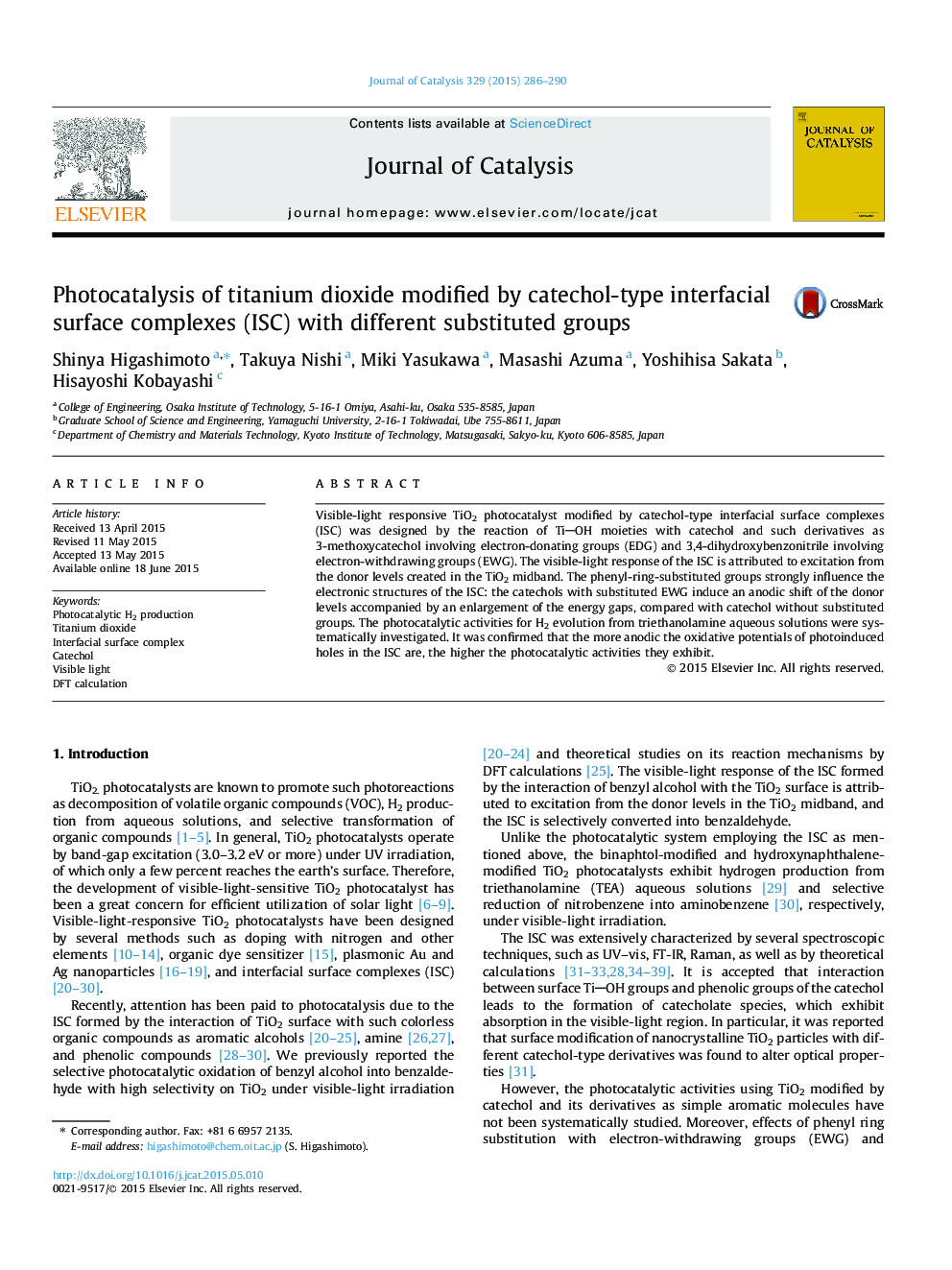| Article ID | Journal | Published Year | Pages | File Type |
|---|---|---|---|---|
| 60816 | Journal of Catalysis | 2015 | 5 Pages |
•Catechol-type interfacial surface complexes (ISC) were designed on the TiO2 surface.•Visible-light response is due to the excitation from the donor levels of the ISC.•The phenyl-ring substituted groups influence to the electronic structures of the ISC.•Photocatalytic activities for H2 evolutions from aq. TEA were investigated.•Electronic structures of the ISC influence to the photocatalytic activities.
Visible-light responsive TiO2 photocatalyst modified by catechol-type interfacial surface complexes (ISC) was designed by the reaction of TiOH moieties with catechol and such derivatives as 3-methoxycatechol involving electron-donating groups (EDG) and 3,4-dihydroxybenzonitrile involving electron-withdrawing groups (EWG). The visible-light response of the ISC is attributed to excitation from the donor levels created in the TiO2 midband. The phenyl-ring-substituted groups strongly influence the electronic structures of the ISC: the catechols with substituted EWG induce an anodic shift of the donor levels accompanied by an enlargement of the energy gaps, compared with catechol without substituted groups. The photocatalytic activities for H2 evolution from triethanolamine aqueous solutions were systematically investigated. It was confirmed that the more anodic the oxidative potentials of photoinduced holes in the ISC are, the higher the photocatalytic activities they exhibit.
Graphical abstractTiO2 modified with catechol-type interfacial surface complex (ISC) exhibits H2 production from aqueous TEA in the presence of Pt co-catalyst under visible-light irradiation. In particular, the photocatalytic activities can be tuned by the electronic structures of the substituted groups. Photocatalytic activities: x: electron-withdrawing groups > electron-donating groups.Figure optionsDownload full-size imageDownload high-quality image (92 K)Download as PowerPoint slide
